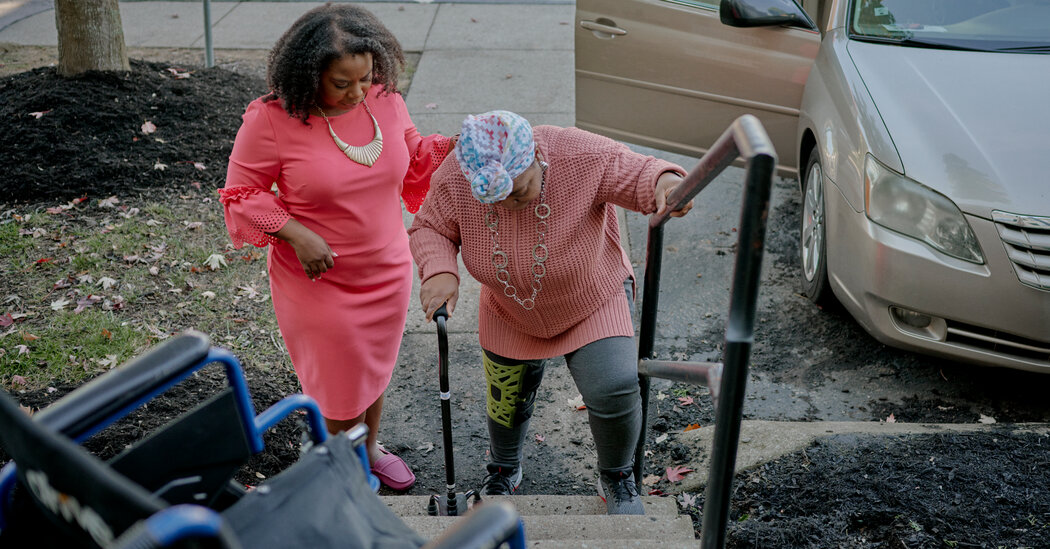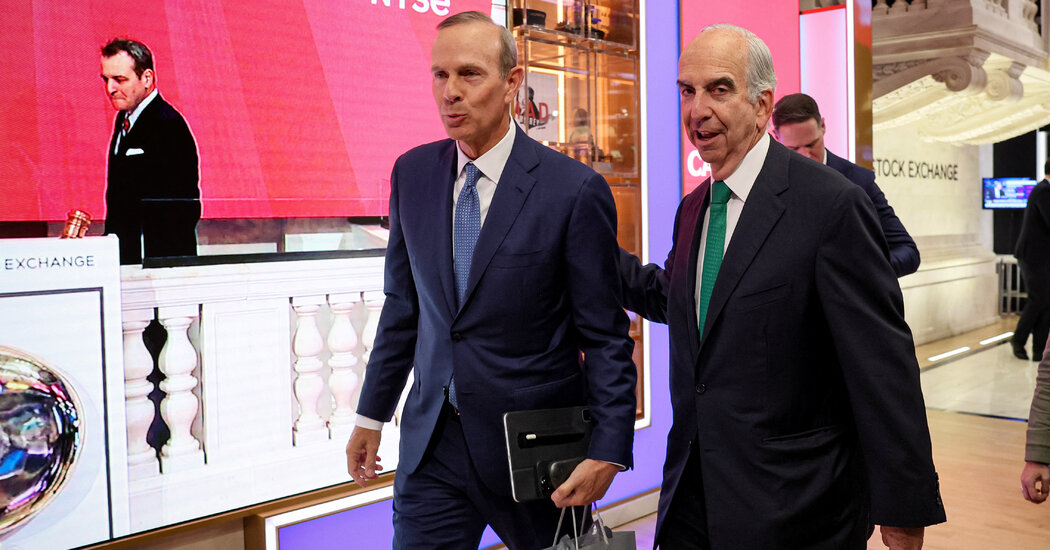China’s Economy Grew Last Year, but Strains Lurk Behind the Numbers
Car production set records in China last year. Restaurants and hotels were increasingly full. Construction of new factories surged.
Yet China’s economic strengths conceal weaknesses. Deep discounts helped drive car sales, particularly for electric cars. Diners and travelers chose cheaper dishes and less expensive hotels. Many factories ran at half capacity or less because of weak demand inside China, and are working to export more to make up for it.
China’s economy grew 5.2 percent last year as it rebounded from nearly three years of stringent “zero Covid” pandemic control measures, the country’s National Bureau of Statistics announced on Wednesday. During the final three months of the year, output rose at an annual pace of 4.1 percent.
Longer term, China’s growth is slowing. High debt, a housing crisis that has undermined confidence, and a shrinking and aging work force are weighing on output.
Western economists predict that growth will be 4.5 percent or less this year, the result not of a cyclical downturn but of a grinding decline that may endure for many years, what economists label secular stagnation. Prices are gradually falling to an extent that China hadn’t experienced since the jolt inflicted by the global financial crisis in 2009, a phenomenon known as deflation that could bankrupt heavily indebted families and companies.
“Secular stagnation — basically a chronic excess of savings leading to slow growth, deflation, asset bubbles and financial strains — has moved from the Western Hemisphere to China,” Lawrence H. Summers, a former secretary of the Treasury, said in an interview last week in Shanghai.
Heavy debts, and the steep interest payments they require, are limiting China’s room to maneuver. Ever since the financial crisis, the central and local governments have responded to economic weakness by spending more for new roads and other infrastructure and by lending more to manufacturers in favored industries. That has juiced growth but resulted in ever-rising debt, particularly at the local level.
Last month, the credit rating agency Moody’s issued a negative outlook for the Chinese government’s financial health. Another agency, DBRS Morningstar in Chicago, downgraded in November its rating for China’s government debt.
Rohini Malkani, a senior vice president of sovereign debt ratings at DBRS Morningstar, expressed concern that overall debt in the Chinese economy now exceeds three years’ economic output — a higher level than in industrialized countries like the United States.
“Over the past 15 years, it has more than doubled” compared even with the country’s fast-growing output, she said.
Zhang Jun, dean of the School of Economics at Fudan University in Shanghai, said in a commentary distributed by the East Is Read newsletter in Beijing that the Chinese government was becoming less willing to stimulate the economy by borrowing and spending for infrastructure. As a result, he wrote, “I increasingly feel that the growth slowdown has a certain inevitability.”
The economy’s performance last year was roughly in line with a consensus of 5.3 percent in a survey of economists last week by Caixin, a Chinese news organization. The economy also met the government’s target, set last March, that growth would be about 5 percent. Premier Li Qiang said on Tuesday at the World Economic Forum in Davos, Switzerland, that the increase last year had been “around 5.2 percent.”
Last year’s performance represented a significant rebound from 2022, when the economy grew only 3 percent. A two-month Covid lockdown in Shanghai in the spring of 2022 disrupted production across much of central China and produced a steep, nationwide drop in consumer confidence, which has stayed low. An abrupt lifting of Covid controls at the start of December 2022 then set off a national wave of illness and death that severely depressed economic output in the final weeks of that year.
Many economists had predicted that 2023 would show a big rebound compared with such a weak base. But after a strong start, spending flagged. Housing prices fell, leaving households feeling less financially secure. And Beijing weakened the country’s social safety net. Among other measures, policymakers a year ago ended a broad unemployment insurance program set up during the pandemic, so as to pressure people to find jobs.
All but the most affluent households kept a close watch on their spending. Many restaurateurs complained of sharp drops in average tabs, while hotel executives fretted that travelers chose less expensive rooms.
About 6,000 eateries closed in Shanghai during the pandemic, but another 7,500 have opened in the past year, said Chris St. Cavish, a food critic and industry analyst in the city, China’s most populous. Growth in the industry has occurred almost entirely among inexpensive cafes charging less than $14 a person and among luxury restaurants that charge as much as $1,000 a person.
“The middle is a difficult place for a restaurant to be right now,” Mr. St. Cavish said.
The biggest anxiety about China’s economy in the coming year is the same one as in each of the past two years: What will happen in the country’s housing market crash? Existing homes are already selling for about one-fifth less than at their peak in the summer of 2021, and that is when buyers can be found at all. The pace of transactions has slowed.
The sharpest effects of the real estate troubles have been felt in developers’ struggles to raise money and start new projects. Investors worry that as developers finish work on previously promised apartments in the coming months, the volume of construction could fall steeply.
Tao Wang, chief China economist at the Swiss bank UBS, said the long fall in construction activity had not ended, although activity was unlikely to plunge. She added that “there is a risk that housing prices will fall more and that household confidence will be hurt more.”
China’s state-controlled banking system has shifted its priorities rapidly in the past year. Few loans are being made to real estate developers and home buyers. Loans to industrial companies for factory construction have soared instead.
Much of the increased factory output is being sold overseas. China’s trade surplus in manufactured goods equals about 10 percent of the country’s economic output. Exports fell last year in dollar terms because China’s currency weakened considerably, although they have resumed rising since November and could climb further. Multinational retailers are finishing the sale of excess inventories they accumulated at the end of the pandemic and have begun placing new orders.
“China’s exports are likely to explode to the upside,” said Hayden Briscoe, a senior UBS asset management strategist.
All over China, car factories are being built in a frenzy. Vehicle exports climbed 58 percent last year, and China surpassed Japan to become the world’s largest car exporter.
The question now is how to persuade Chinese households to stop parking much of their income in bank accounts and start spending again. “Dealing with a chronic excess of savings may be the defining macroeconomic challenge of China for the next decade,” Mr. Summers said.
Li You contributed research.


